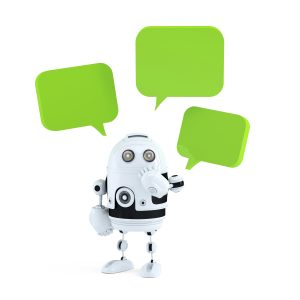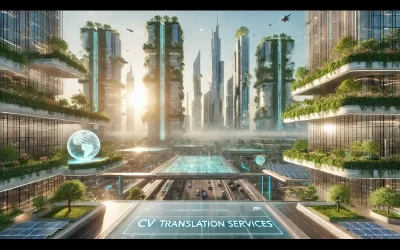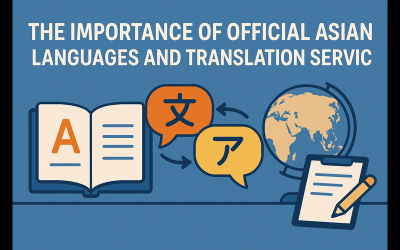The translation industry was transformed way back in the 1990’s with the introduction of machine translation. Then, machine and human translation started to coexist. But, did that make human translators any less important? Did they cease to exist?
Not really. Any graphic designer will tell you that 30% of their work spins around modifying another graphic designer’s blunders. It’s a similar plight for human translators; almost a third of their work is amending the errors a machine translation tool makes.
Translation is usually seen as an unnecessary issue that should ideally be resolvable, without incurring any cost or time. Machine translation promises instant, free translation. Consequently, most companies resort to machine translations, owing to their inadequate training budgets. But, does that meet the company’s standards? It doesn’t necessarily mean accurate and consistent translation.
For any company with a global reach, translation is necessary to deliver training. Therefore, it doesn’t come as a surprise that when offered a free technical solution with the shortest lead time, people usually go in for machine aided translation without looking at the outcome.
What Is Machine Translation?
Any translation carried out by a computer is Machine Translation (MT). It is the simplest form of translation, allowing users to choose the base and target languages. The system is called Neural Machine Translation if the software has self-learning AI components.
If it was not for the superiority of human translation over MT, then most companies would be relying on machine translators exclusively. At any rate, multinational enterprises need to realize sooner rather than later that professional translation is an expertise that should never be underestimated.
In general, the art of translation and translation services don’t just depend on word-for-word replacement of a source language text with a target language equivalent. If that were the case, then human translation would be rendered obsolete by MT. At the moment though, all professional translation is best done with human translation and the occasional MT service.
The Shortcomings of Machine Translation
Now let’s try to figure out the answer to this question: Will machines replace human translators? To illustrate, a computer translation assistant once automatically translated an article about the former First Lady of the United States, Laura Bush, in French. Although computer translators are programmed to discern certain expressions and figures of speech, each and every instance of “Laura Bush” found in the article ended up being translated as “le buisson de Laura”. More to the point, “Bush” was transliterated by the machine as a noun instead of a family name, and “buisson” is incidentally French slang for “vagina” to boot. Now, how is that for an example of machine translation?
As long as automatic machine translators lack self-awareness or insight equal to that of a normal human being, human translation will always be needed. That self-awareness is the biggest difference in
comparison between human translation and machine translation. At any rate, let’s now take a good look at what a high-grade, top-notch professional translation really looks like. To reiterate, it’s important to view a translator as an expert craftsman; a linguist, a specialist, and a wordsmith all-in-one multiplied by two or more different languages.
Why Do People Choose Machine Translation?
Speed
Among other things, computers have the advantage over humans when it comes to speed. Most companies resort to machine translation when a large amount of content is to be translated. Machine translation is often a quicker method than working with human translators. However, a major drawback when it comes to machine translation is that, there is a loss of accuracy as a computer is doing the translating and not a native speaker of the target language. Imagine reading a machine translation novel full of typos and grammar errors.
Consistency
At times, machine translation provides a superior quality than human interpretation. This is predominantly because of the consistency in wording and style, which is the place machine translation truly exceeds expectations. But machines fail to score in choosing the right words, based on cultural nuances. They can’t judge the right meaning based on the context – this is where humans score.
More For Less
Human evaluation of Machine translation allows for a quick turnaround and customization on projects, which leads to significant savings in translation cost. With machine translation, there is no extra cost for rework, but human translation has thus far been cost-prohibitive. This is why machine translation pricing is generally cheaper. (If not free)
Why Is Human Translation The Best?
Can you achieve the accuracy and excellence of professional translation using a machine? Well, the answer is an unambiguous ‘NO’. Human translation calls for a systematic process and the application of focused expertise of the human translator who is capable of choosing the right alternatives.
Better Quality
How do you distinguish between a good translation and a mediocre one? A good translation sounds natural and fluent. Human translation builds on creating an artistic interpretation of the original content, with words and phrases that are rewritten and re-arranged to appeal and suit the target audience. Most importantly, the essence of the content is retained and this is possible only with a human translator, as they are aware of cultural sensitivities, native vernaculars, tone and idiomatic phrases; this is impossible with a machine.
Language Expertise
When it comes to a native translator, their expertise in both languages helps them translate the content to suit the needs of the audience. Although MT is economical and quicker than human translation, they can’t grasp the connotation of a document.
Cultural Sensitivities
An important aspect to be kept in mind while translating content is the cultural sensitivities that are followed the world over. Each culture has its values woven into the language. Therefore, when translating your professional content from one language to another, it is imperative to be sensitive to these different cultural norms and values. Many translators claim to have knowledge of cultural norms and values, but be sure to choose a professional translation firm. Professional firms are familiar with the know-hows while dealing with culturally sensitive content.
The difference between human translation and machine translation

Machine translation
With Google Translate, you put the text in and, if it’s short, it almost instantly comes up with a translation. It produces this translation by using an artificial neural network. That isn’t a brain, which means it can’t understand meaning based on context, interpret different meanings or innately recognize good or bad quality. In short, it makes lots of boo-boos.
If you have access to a trained machine translation engine then you can get better results. These machines may be based on programmed rules to generate machine translation datasets. They might decide what option to select using statistics. They may use neural networks. Read about the history of machine translation to better understand. The raw results won’t be perfect, particularly if you’re trying to translate a marketing or creative text, like a tourism website. So, you then bring in human translators to think, identify boo-boos and correct them. It’s only economically interesting to do this with certain texts because professional human translators are fast. The results from the machine have to be good to make post-editing worthwhile.
Human Translation
Now let’s try to cover pros and cons of human expert translation. Even though translators can hardly be compared to, say, writers or journalists when it comes to making stories and articles from scratch, they are still considered experts in their field because of the way they hone a source text to fit a certain audience. In those terms, translators can be compared to editors who constantly shape, mold, and perfect a written piece for better public consumption.
To illustrate, here’s the typical way a translator goes about his business: Once he has finishes a draft of his translation, he’ll check whether or not his work contains any inconsistencies, misunderstandings, gaffes, and the like via constant and deliberate proofreading. From there, the translator will rewrite his proofread outline so that it will hide the translation marks. Being able to do so will help make the end product seem less like the result of a translation service and more like an original document.
Machine vs Human
Machines are faster, but the output is unreliable. In certain domains, with high volume, if you use a customized machine translation engine with human post-editors, then you can get satisfactory results for less than working with humans alone. The importance of machine translator is obvious but if you take speed away in the battle of machine vs human translation, we still kick artificial ass.
Certified Translation Services
Get your documents translated and certified by a professional translator in 120+ languages with 24 hour delivery.
Get a Quote Rana Maalouf
Rana Maalouf

